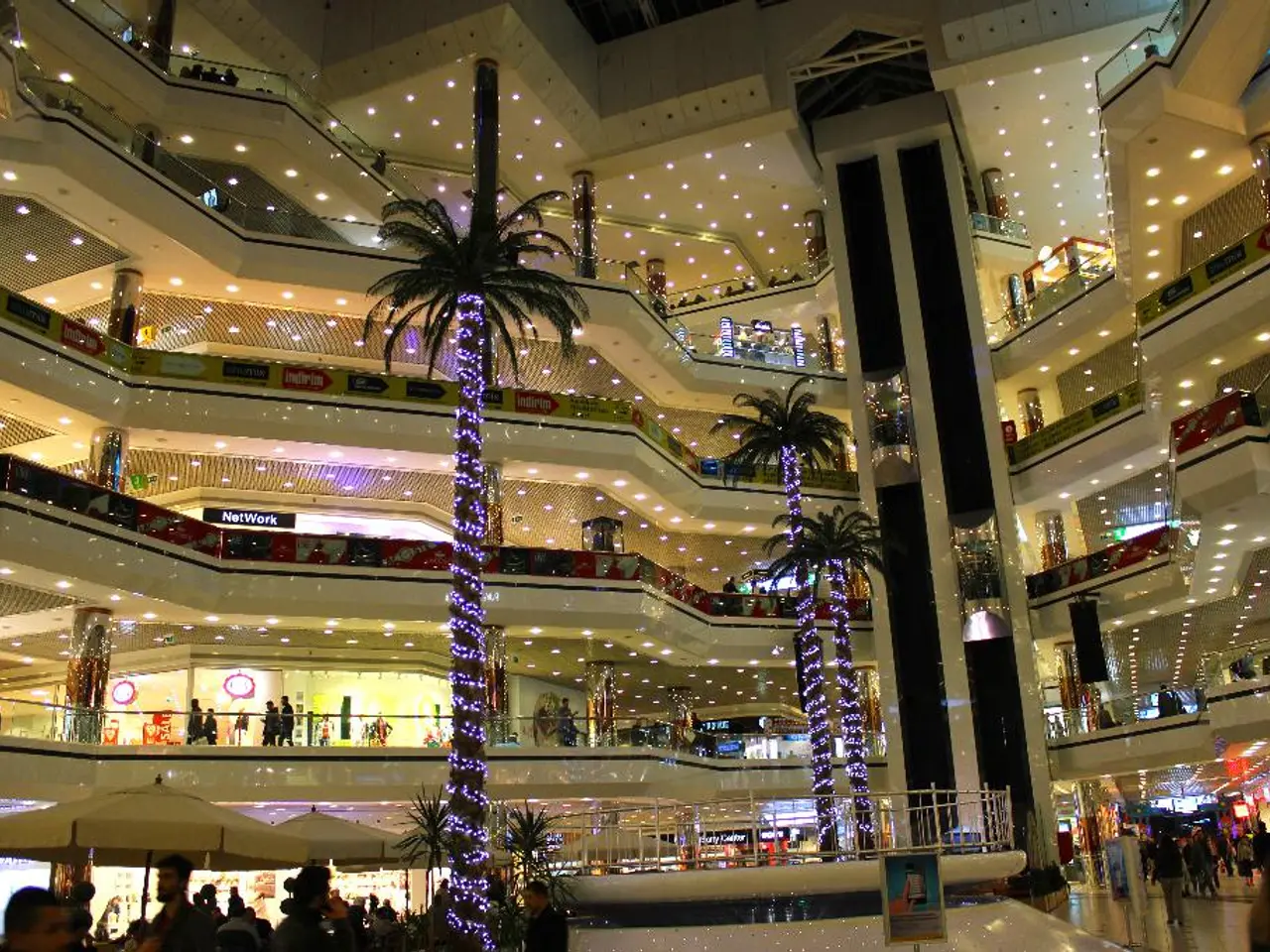Unfilled territories persist in Romania's contemporary retail landscape
In the retail sector, a strategic shift is underway to address the imbalance in retail development in Romania. This shift is driven by the growing attractiveness of secondary and tertiary cities, which have been gaining attention from modern retail developers.
These cities, such as Cluj-Napoca, Timișoara, and Iași, offer a growing consumer demand, improving infrastructure, and opportunities for regional hubs aligned with expanding e-commerce and logistics networks. This makes them attractive for retail expansion beyond Bucharest.
Key factors driving this trend include the uneven distribution of retail space, growing consumer markets outside Bucharest, e-commerce and logistics expansion, recent retail projects in secondary and tertiary cities, and relatively low retail density nationally.
The Central-West region (including Transylvania and Banat) holds about 33% of Romania’s modern retail stock, surpassing Bucharest-Ilfov at 28%. This indicates strong retail presence and development in secondary cities. Retail turnover in Romania has risen sharply, especially in Eastern and regional cities, signaling rising purchasing power and retail demand in these areas.
Retailers and FMCG companies seek to improve delivery efficiency through regional hubs placed not only near major centers but also in well-connected smaller cities, fueling commercial space demand in these locations. Notable developments such as the expansion of Mall Moldova in Iași, Iulius Mall in Suceava, and Funshop Park in Ploiești highlight active investment beyond the capital.
Romania’s retail density remains low by European standards, creating potential for growth in less saturated regional markets where local populations and consumption patterns are expanding. However, 24 counties in Romania lack any modern retail facilities such as malls, retail parks, or shopping galleries.
Dana Radoveneanu, Head of Retail Agency at Cushman & Wakefield Echinox, stated that there are cities with over 50,000 inhabitants that do not have access to a modern shopping centre. These counties include Ialomită, Teleorman, Călărași, Vaslui, and Botoșani.
Future retail projects are strongly targeting secondary and tertiary cities in Romania due to their high growth potential. The retail sector is shifting strategy to focus on expanding into new geographic areas rather than strengthening existing retail hubs. Retail park formats are expected to dominate upcoming developments due to lower initial investment and flexible leasing structures.
Analysts expect demand to remain resilient in areas with limited supply. Despite inflationary pressures, retail consumption is projected to grow modestly, indicating resilient demand in underserved areas. The current imbalance in retail development in Romania is largely due to historical investment patterns favouring economically stronger and more densely populated areas.
In conclusion, the attractiveness of secondary and tertiary Romanian cities for modern retail development is driven by demographic and economic growth outside Bucharest, expanding logistics and e-commerce infrastructure needing regional hubs, and an uneven retail landscape that incentivizes developers to tap into under-served but promising markets in these cities.
[1] Ziarul Financiar [2] Retail News Europe [3] Property Forum [4] GlobalData [5] Cushman & Wakefield Echinox
- The growing attractiveness of secondary and tertiary cities in Romania, such as Cluj-Napoca, Timișoara, and Iași, is leading to significant investment in real-estate, particularly within the retail sector.
- In the retail industry, analysts anticipate that the demand for commercial space will continue to rise in secondary and tertiary cities, due to factors like improving infrastructure, expanding e-commerce networks, and growing consumer markets.
- As the retail sector in Romania evolves, strategies are being reevaluated to focus on investing in new geographic areas beyond Bucharest, driven by the high growth potential and under-served markets found in secondary and tertiary cities.




